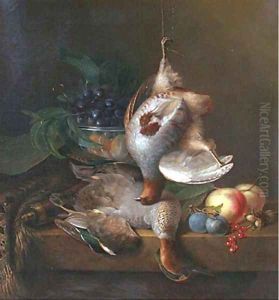Frans Van Heukelom Paintings
Frans Van Heukelom was a Belgian artist and illustrator, born in 1879 in Belgium. Not as widely recognized as some of his contemporaries, Van Heukelom nonetheless made a significant contribution to the art world of the early 20th century, primarily through his work as an illustrator. His artistic journey reflects the broader trends and transitions within the European art scene of the time, particularly the move towards modernism.
Van Heukelom's early works were characterized by a strong emphasis on detail and a commitment to realism, traits that were quite prevalent in the art of the late 19th century. However, as he matured as an artist, his style began to evolve, showing influences of Art Nouveau, which was gaining popularity across Europe during his formative years. This period was marked by the use of dynamic, flowing lines and a strong sense of ornamentation, which can be seen in Van Heukelom's illustrations.
Throughout his career, Van Heukelom worked on various projects, including book illustrations, posters, and other graphic works. His illustrations often featured intricate designs and a fine sense of color, which made his work stand out. Despite his talent and the quality of his work, Van Heukelom did not achieve the same level of fame and recognition as some of his contemporaries.
Van Heukelom's contribution to the art world was cut short by his untimely death in 1929. Though his career was relatively brief, his work provides a fascinating glimpse into the transitional period of European art, bridging the gap between the realism of the 19th century and the emerging modernist movements. Today, his illustrations remain a testament to the talent and artistic vision of this lesser-known but impactful artist.
